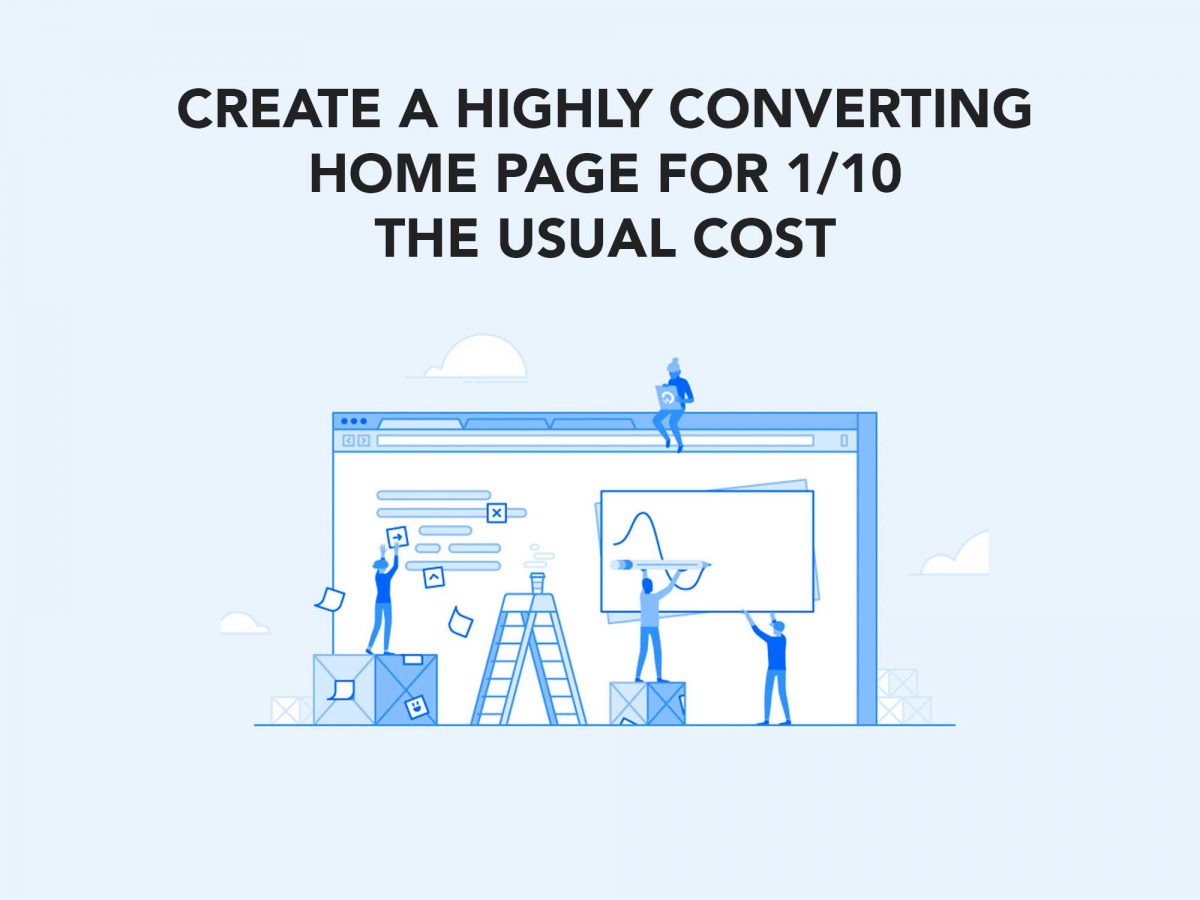“I need a new website because I’d love that clean look”
or “I want a new website as we need to look more professional”
or “We need the nicest-looking website where aesthetics are a must”
I hear these pretty often and it’s easy to go into that direction. But just to save you some money and help you not lose some more days of your life, here’s what will happen if you go that way:
- You’ll find someone who does pretty work
- They’ll do their job
- It won’t be enough as you’ll have your own opinions and now this design you’re paying for is half-you-half-designers
- None of you (neither your company or the design person/team) will be happy with the outcome
- On top of that, your conversion/subscription rates are going down now
It’s true that steps 3 and 4 might not happen based on what type of person you are and who you hire. But the most important part is step 5. If aesthetics are the #1 priority, that means sales/brand awareness are not.
You’ll end up with something pretty that doesn’t sell — trust me, I’ve seen that in my life more than I wanted to and had to work 3x as hard to get those numbers back up.
What should you focus on, then?
I’d focus on optimising for conversion and letting unquestionable aesthetic come as a side-effect.
And now here’s the punchline: you’re able to think of how to structure your pitch by looking at some bigger companies in your space. IF (here’s the big if) you’re able to see through.
In other words, if you’re able to read.
Meaning: because Shopify probably spent millions in < hiring, developing, testing, analyzing, retesting etc. etc. ad nauseam > their website, that means you’re able to avoid paying as much as them.
They’ve spent a lot of time doing all these and got to the final product. You can look at what they do, read through why they place testimonials in that certain place and how they talk to their people.
How to “read”, you may ask?
I was advising someone who looked up at Shopify and Oberlo. Because they’re in kinda the same space, he thought their aesthetic and cleanliness are to be followed.
Then came my opinion which is what I’ve written so far in this article and thus we’ve had a surface analysis of Shopify’s website. That’s how we’ve read it in a quick conversation.
So I’ve seen that [person’s product] helps dropshippers sell and market themselves better. I’d put myself in the shoes of these people as much as possible — what are their objections to a product like [name], what makes them say “this is too complicated, I’ll deal with it later” (i.e never to be seen again), what reassures them etc.
Write/think as much as possible about them and their backstory
Then arrange these objections in the sequence that they could possibly happen and make the website in accordance to that. What you’ve shown me, Oberlo or Shopify (or most successful companies for that matter) will show that if you look closely.
Let’s take Shopify for instance — it’s for those who are afraid of seeing Woocommerce + 10 million plugins or the ugly Prestashop or what have you. But at the same time they embrace a culture of hustlers and are looking to motivate them
1. “Build your business. You’ve got the will. We’ve got the way” — motivating, desired future state, reassurance
2. Those pictures showing low-key success stories
3. Objection 1: building “With you from first sale to full scale” — showing the process of setting up, because the first objection is “Okay, start an online business, but how am I gonna do it?”. They show their builder
4. Objection 2: How/where — showing that they’ve got all these integrations outside the shop. Fb marketplace, in-person POS, etc
5. Objection 3: “Market your business” answering “how am I gonna market it?”
(So far these 3 actually answer the “How the hell will I know the roadmap to starting my business?” objection)
And then on and on: success stories, reassuring features (24/7 support) etc.
If you read through what someone like them is doing, you’d be very benefitted from copying their way of tackling conversion optimisation. Then aesthetic just comes as a plus that’s conveying more trust
And when I say copy I mean use it as a starting point, obviously don’t 100% copy them.
That’s what came out of a quick analysis in a conversation. Surely if it’s a matter of optimising for the sake of selling, you’ll spend way more time than that.
The bottom line
A properly optimised website can sell well even if it’s not as pretty as Stripe.com. Yes, it will sell even more when it’s pretty.
But pretty comes on top of a foundation. And hey, let’s do the math here: if you sell with an “uglier” website, you’ll have the capital to retrofit/modernize/revamp/upgrade it.
And hey, take this from someone who does this for a living. Trust me, it’d be easier for me to just make pretty stuff but then both you and I will starve.
So, to recap, you’d be saving yourself money from working with someone like myself by planning it this way. Looking at what’s working for others, properly reading through that and then implementing it.
Hire some designers (thus avoiding the consultancy bill) and off you go. But be prepared for trial and error.
If all this made sense, I wrote this piece which got published just today, after being scheduled for weeks in Startup Grind. It’s a longer piece which goes more in-depth than what I’ve done today, but it will probably help you even more:
About Ch Daniel
I run Chagency_, an experiences design agency — we help SaaS CEOs reduce user churn. I write daily on this topic and in similar areas. Here are my best pieces.
If I’ve helped you, follow me here and reach out: LinkedIn | Twitter | Email | Quora | YouTube
I’ve also founded an app that went 0-200K users in its 1st year — chdaniel.com/app
If you want a more of a personal connection, here’s how to have that.
Illustration credits: Kevin Yang




